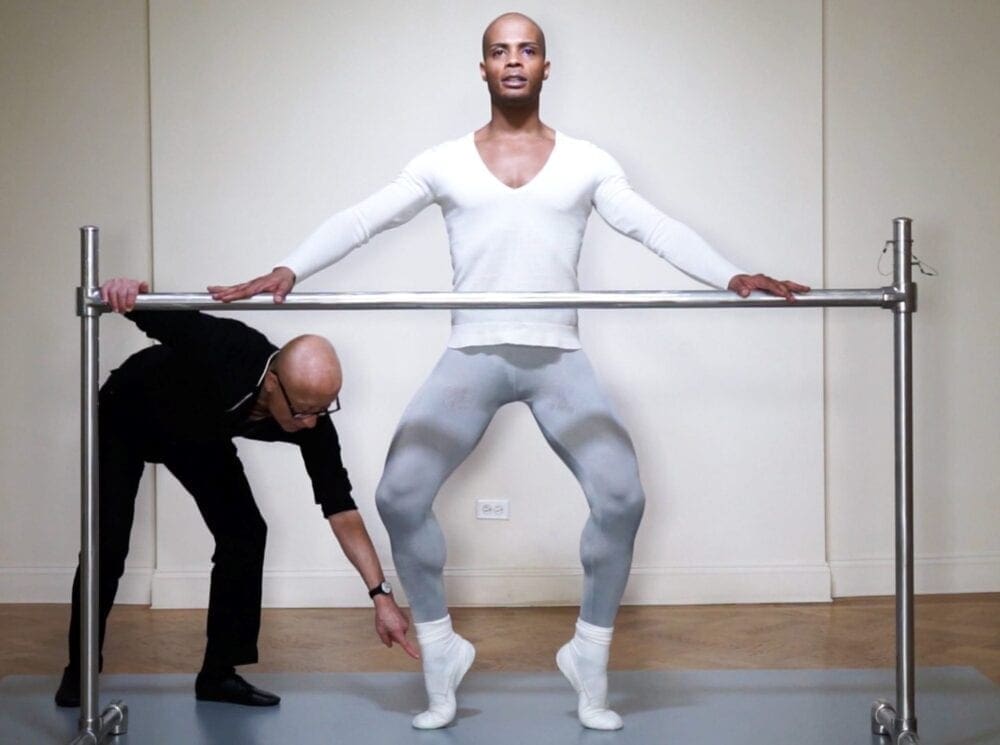Vernard Gilmore of The Alvin Ailey American Dance Theater
Ballet is about balance. Every movement in dance – from the simplest motion to the most complicated center floor combination – requires a solid foundation and concentrated energy. Achieving this centeredness can bring about greater discipline and understanding in all aspects of life.
During my career as a professional dancer, I was proud to be a part of talented companies that could make the grace and beauty of ballet seem effortless. As an instructor, I often tell my adult beginners that even these masterful and soaring performances started from the ground up – with a focus on footwork.
When working with my students, one of my biggest on-going challenges is finding better ways to teach these students how to demi-plié and relevé so that they will balance, turn, and jump with strength and control.
Students should work with the understanding that almost every movement we make in ballet consists of a plié and a relevé – a rising to a balance on the half-toe. Simply put, we go down to go up. Therefore, learning to plié-relevé correctly is of the utmost importance.
Even students with previous training make the same mistake as absolute beginners in that they think “pose” instead of “action.” They begin by bending the knees and then sink down into a PASSIVE pose with legs and feet relaxed. This does not strengthen the feet or legs, nor does it prepare them to spring up quickly into a balance, turn, or jump.
That is precisely why I teach the ACTIVE almost-isometric demi-plié – initiated by the toes gripping the floor and pulling the legs into a minimal plié. The muscles of the foot and ankle are actively engaged, which prepares the foot to spring up on the half-toe.
Coming out of the preparatory plié is achieved by reversing the action: the foot is relaxed, the toes are spread, and you push down until you rise on half-toe with legs straight and the weight of your body reaching the tips of the toes.
Learning to think with your feet and have your feet activate your legs is not taught in the traditional ballet class. Once students have tried making the demi-plié from their toes to their toes, they say they can feel the difference and find they have much better balance and control.
The benefits of doing supplementary exercises outside the ballet class that will strengthen your foot and ankle goes cannot be underestimated. A little practice each day at home will strengthen your feet and ankles, improve your balance, and lessen the chances of falling and twisting or spraining your ankle or knee. For this reason, I am introducing new “single-exercise” streaming videos that can be viewed anywhere, anytime, provided there is internet and a viewing device.
Learning to think with your feet and have your feet activate your legs is not taught in the traditional ballet class. Once students have tried making the demi-plié from their toes to their toes, they say they can feel the difference and find they have much better balance and control.
These relatively short single-subject videos have three sections: first I show and describe the exercise; next, with the demonstrator, I break down the exercise to its essentials, especially detailing the muscular control and sequence of movement through the body parts; and then it is demonstrated to music by the dancer with me standing by coaching.
The first series of three videos is titled FOOT STRENGTH and is demonstrated by Vernard Gilmore of The Alvin Ailey American Dance Theater. I am so happy that Vernard was available to do this video. It was such a wonderful experience to come full circle with a former student who is today a greatly admired artist and human being.



